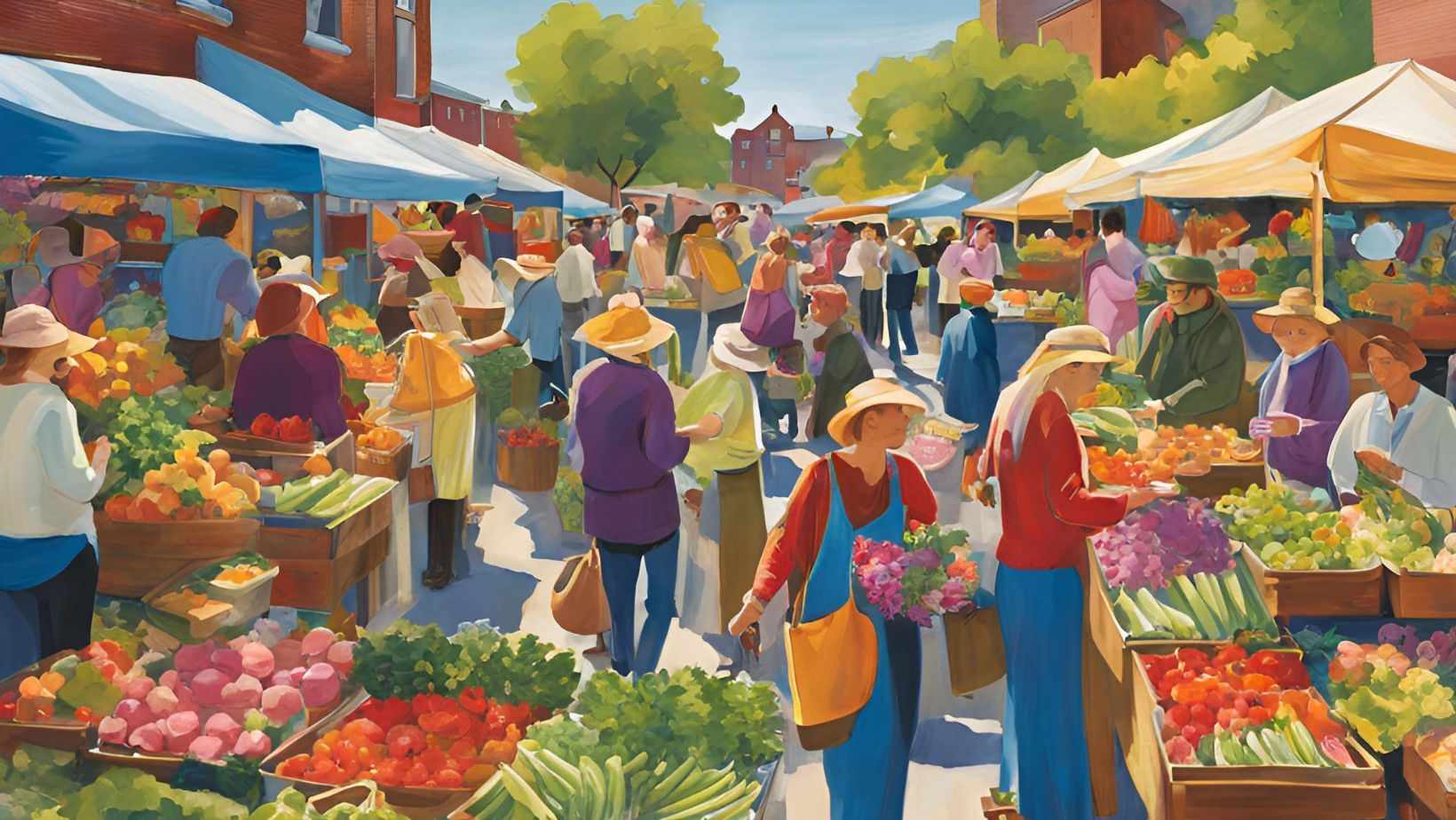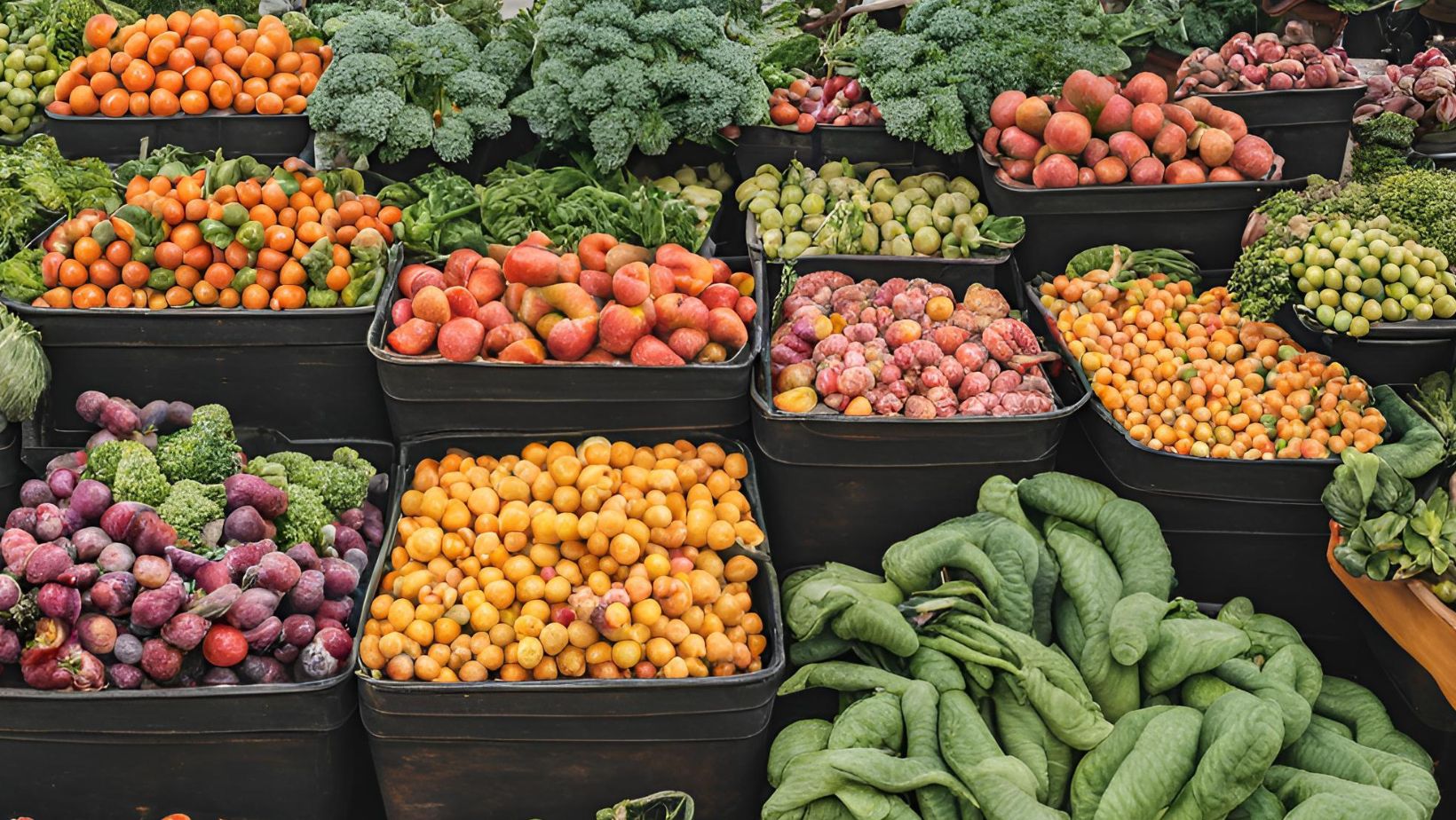
As I explore the fascinating world of agricultural systems in AP Human Geography, market gardening definition AP human geography stands out as a distinctive form of commercial farming. It’s an intensive agricultural practice where farmers cultivate vegetables, fruits, and flowers on small plots of land near urban areas.
I’ve observed how market gardening differs from traditional farming methods by focusing on high-value crops grown specifically for nearby city markets. This proximity to urban centers isn’t just convenient – it’s essential for delivering fresh produce directly to consumers. In my studies of agricultural geography, I’ve found that market gardening represents a perfect example of how location and human activity intersect to create sustainable food systems.
Key Takeaways
- Market gardening definition AP human geography: is an intensive agricultural practice where farmers grow high-value crops (vegetables, fruits, flowers) on small plots (1-5 acres) near urban areas
- Key characteristics include direct sales to local markets, labor-intensive methods, diverse crop selection (20-30 varieties), and year-round growing cycles through succession planting
- Market gardens typically operate within 50 miles of city centers, focusing on three spatial patterns: urban fringe locations, intensive growing zones, and transportation corridors
- This farming method differs from traditional agriculture through its emphasis on premium quality over quantity, fresh market sales, and short supply chains from field to consumer
- Market gardening plays a vital economic role by creating 1.5-3 jobs per acre, generating $50,000-150,000 in annual revenue per acre, and strengthening local food security
Market Gardening Definition AP Human Geography
Market gardening definition AP human geography combines intensive cultivation techniques with strategic location planning to serve urban consumers. This agricultural practice focuses on growing high-value crops like vegetables, fruits, herbs, flowers on small land parcels (typically 1-5 acres) situated near cities.
Key characteristics of market gardening include:
- Direct sales to local markets through channels like farmers’ markets, CSAs, restaurants
- Small-scale production on plots under 5 acres
- Labor-intensive methods using hand tools mechanical equipment
- Diverse crop selection with 20-30 different varieties per season
- Year-round growing cycles with succession planting
- High-value perishable produce requiring quick delivery
Market gardens operate within three distinct spatial patterns:
- Urban fringe locations within 5-10 miles of city centers
- Intensive growing zones concentrated in climate-favorable regions
- Transportation corridors connecting production areas to markets
The economic model centers on:
| Revenue Source | Typical Percentage |
|---|---|
| Direct retail sales | 40-60% |
| Restaurant contracts | 20-30% |
| Farmers markets | 15-25% |
| CSA programs | 10-20% |
This system differs from traditional agriculture through its:
- Focus on premium quality over quantity
- Emphasis on fresh market sales versus storage crops
- Integration with urban food systems
- Reliance on intensive growing methods
- Short supply chains from field to consumer
These characteristics align market gardening with sustainable urban food production models studied in AP Human Geography.
Characteristics of Market Gardening
Market gardening exhibits distinct features that differentiate it from conventional farming methods. Here are the key characteristics that define market gardening operations in modern agricultural landscapes.
Small-Scale Intensive Farming
Market gardens operate on compact plots ranging from 1-5 acres with maximized growing space utilization. The intensive cultivation methods include:
- Implementing vertical growing systems to increase yield per square foot
- Utilizing succession planting techniques for continuous harvest cycles
- Maintaining dense plant spacing in raised beds or container systems
- Applying intensive soil management through composting organic amendments
- Practicing intercropping to maximize land use efficiency
| Farming Aspect | Traditional Farming | Market Gardening |
|---|---|---|
| Plot Size | 100+ acres | 1-5 acres |
| Crop Density | Low-medium | Very high |
| Labor Input | Mechanized | Manual intensive |
| Yield per Acre | Lower | Higher |
- Setting up operations within 50 miles of city centers
- Establishing farms in urban-rural transition zones
- Locating near transportation corridors for efficient distribution
- Utilizing vacant urban lots or converted residential spaces
- Positioning within delivery range of target restaurants markets
| Location Factor | Distance from Urban Core |
|---|---|
| Inner City | 0-5 miles |
| Urban Fringe | 5-15 miles |
| Suburban Belt | 15-30 miles |
| Peri-urban Zone | 30-50 miles |
Historical Development of Market Gardens![]()
Market gardens originated in medieval Europe, evolving from subsistence farming to commercial enterprises feeding growing urban populations. The development reflects changing agricultural practices tied to urbanization patterns studied in AP Human Geography.
Traditional European Origins
Medieval monasteries established the earliest documented market gardens in the 8th century, cultivating vegetables herbs for local communities. French intensive gardens, known as “”marais,”” emerged in Paris during the 12th century, introducing techniques like cold frames raised beds hotbeds. Market gardens flourished around European cities in the 16th-18th centuries:
| Period | Location | Key Development |
|---|---|---|
| 1500s | Netherlands | Introduction of glasshouses |
| 1600s | England | Development of London Market Gardens |
| 1700s | France | Expansion of Paris marais system |
Modern Applications
Contemporary market gardening incorporates traditional European methods with modern sustainable practices. Key modern developments include:
- Biointensive methods utilizing double-digging soil preparation
- Season extension through high tunnels hydroponics
- Organic certification programs starting in the 1970s
- Precision farming tools like drip irrigation smart sensors
- Urban farming initiatives in metropolitan areas
- CSA (Community Supported Agriculture) programs beginning in 1980s
Market gardens now operate in diverse settings from rooftop gardens to vertical farms, adapting historical techniques for modern urban environments.
Economic Importance of Market Gardening![]()
Market gardening plays a vital role in local economies by connecting urban consumers with fresh produce through direct marketing channels. The economic impact extends beyond simple transactions to influence food security regional development.
Local Food Systems
Market gardens strengthen local economies by circulating money within communities through direct-to-consumer sales channels. A typical market garden grossing $50,000-$150,000 annually creates 1.5-3 full-time equivalent jobs per acre. Local economic benefits include:
- Generated tax revenue from farmers’ market sales
- Increased foot traffic for nearby businesses
- Reduced transportation costs compared to industrial agriculture
- Enhanced property values near market garden locations
- Multiplier effects from local spending by market gardeners
| Economic Indicator | Impact per Acre |
|---|---|
| Gross Revenue | $50,000-$150,000 |
| Jobs Created | 1.5-3 FTE |
| Local Spending | 65-85% |
| Transportation Savings | 25-40% |
- Year-round production through season extension techniques
- Diverse crop selection meeting cultural food preferences
- Emergency food supply during supply chain disruptions
- Reduced dependency on long-distance food transportation
- Integration with food assistance programs
| Food Security Metric | Market Garden Impact |
|---|---|
| Fresh Produce Access | Within 10 miles |
| Product Diversity | 30-50 crop varieties |
| Distribution Range | 25-50 mile radius |
| Food Assistance | 15-20% of production |
Market Gardening Distribution Patterns
Market gardening follows specific geographical distribution patterns based on proximity to urban centers. These patterns create distinct zones of production influenced by transportation networks, population density, and land availability.
Geographic Requirements
Market gardens require locations within 50 miles of urban centers to maintain product freshness. The ideal sites feature:
- Level to gently sloping terrain with less than 5% grade
- Well-draining soils with pH levels between 6.0-7.0
- Protection from strong winds through natural barriers or windbreaks
- Southern exposure for maximum sunlight utilization
- Access to reliable water sources within 500 feet
- Minimum frost-free growing season of 140 days
| Zone Type | Distance from City Center | Typical Plot Size |
|---|---|---|
| Inner City | 0-5 miles | 0.25-1 acre |
| Urban Fringe | 5-15 miles | 1-5 acres |
| Suburban Belt | 15-30 miles | 5-10 acres |
| Peri-urban | 30-50 miles | 10-20 acres |
- Road Networks: Location within 2 miles of major arterial roads
- Market Access: 30-minute maximum drive time to primary markets
- Loading Zones: Designated areas for efficient product transfer
- Storage Facilities: Temperature-controlled spaces within 10 miles
- Distribution Hubs: Central collection points serving multiple farms
- Alternative Routes: Secondary road access for weather emergencies
| Transport Factor | Maximum Distance | Time Constraint |
|---|---|---|
| Primary Market | 50 miles | 45 minutes |
| Processing Facility | 25 miles | 30 minutes |
| Cold Storage | 10 miles | 15 minutes |
| Direct Sales | 5 miles | 10 minutes |
Global Examples of Market Gardening
Market gardening practices vary significantly across different regions worldwide, reflecting local economic conditions, cultural practices, and urban development patterns. Each region demonstrates unique adaptations of market gardening principles to serve local urban populations.
Developed Nations
Market gardens in developed nations integrate advanced technology with traditional methods. In the Netherlands, greenhouse complexes near Rotterdam cover 25,000 acres, producing vegetables year-round through hydroponic systems. French market gardens around Paris utilize intensive growing techniques in small plots of 0.5-2 acres, serving high-end restaurants through direct distribution networks. Australian market gardens in Perth’s Swan Valley operate on 5-10 acre plots, incorporating automated irrigation systems while maintaining traditional crop rotation practices.
Developing Countries
Market gardening in developing nations addresses food security through labor-intensive methods. In Ghana’s urban peripheries, market gardens averaging 0.2-1 acre produce leafy vegetables using manual irrigation techniques. Vietnam’s peri-urban areas feature intensive market gardens within 15 miles of Hanoi, where farmers grow water spinach, herbs, and vegetables on plots under 1 acre. Mexican market gardeners in Xochimilco maintain ancient chinampas (artificial islands) for growing crops, producing 20,000 tons of vegetables annually from plots averaging 0.5 acres.
| Region | Average Plot Size | Annual Production | Primary Crops |
|---|---|---|---|
| Netherlands | 25,000 acres (total) | 5 million tons | Tomatoes, peppers |
| Paris Region | 0.5-2 acres | 15,000 tons | Herbs, vegetables |
| Perth | 5-10 acres | 50,000 tons | Root crops, leafy greens |
| Ghana | 0.2-1 acre | 5,000 tons | Leafy vegetables |
| Vietnam | Under 1 acre | 30,000 tons | Water spinach, herbs |
| Mexico | 0.5 acres | 20,000 tons | Traditional vegetables |
Impact on Agricultural Geography
Market gardening transforms traditional agricultural landscapes by creating intensive production zones near urban centers. These zones establish distinct land-use patterns characterized by small-scale, high-value cultivation areas within 50 miles of city markets.
Spatial Organization Patterns
Market gardens create three distinct agricultural zones:
- Intensive Production Rings: Dense cultivation areas within 5 miles of city centers
- Mixed-Use Belts: Combined residential and agricultural spaces 5-15 miles from urban cores
- Specialized Production Areas: Larger plots 15-30 miles from cities focusing on specific crop types
Land Use Modifications
Market gardening alters agricultural landscapes through:
- Vertical Growing Systems: Increasing production capacity by 40% per acre
- Intercropping Patterns: Supporting 3-4 crop rotations annually
- Infrastructure Development: Adding greenhouses hoophouses irrigation systems
- Buffer Zones: Creating 30-foot transitional areas between conventional farms urban spaces
Economic Geography Effects
The economic impact of market gardens manifests in:
| Impact Category | Measurement |
|---|---|
| Job Creation | 1.5-3 jobs per acre |
| Revenue Generation | $50,000-150,000 per acre |
| Land Value | 15-25% increase in adjacent properties |
| Local Business Growth | 20-30% increase in nearby retail activity |
Urban-Rural Interface
Market gardens establish distinctive transition zones featuring:
- Agricultural Innovation Hubs: Concentrated areas of intensive farming techniques
- Distribution Networks: Local food systems within 10-mile radiuses
- Resource Management Systems: Water recycling soil conservation practices
- Mixed Land Use: Integration of production processing distribution facilities
These agricultural modifications create unique geographical patterns connecting urban food demands with local production systems.
A Vital Role in Shaping the Future
market gardening definition AP human geography stands as a crucial bridge between urban consumers and local food production systems. I’ve shown how this intensive farming method shapes agricultural landscapes while creating sustainable economic opportunities in urban and peri-urban areas.
From its historical roots to modern applications market gardening continues to evolve adapting to changing urban needs and environmental challenges. Through strategic location planning efficient land use and direct marketing channels these small-scale operations demonstrate remarkable resilience and profitability.
As cities expand and the demand for local fresh produce grows I believe market gardening will play an increasingly vital role in shaping the future of sustainable urban food systems and agricultural geography.





